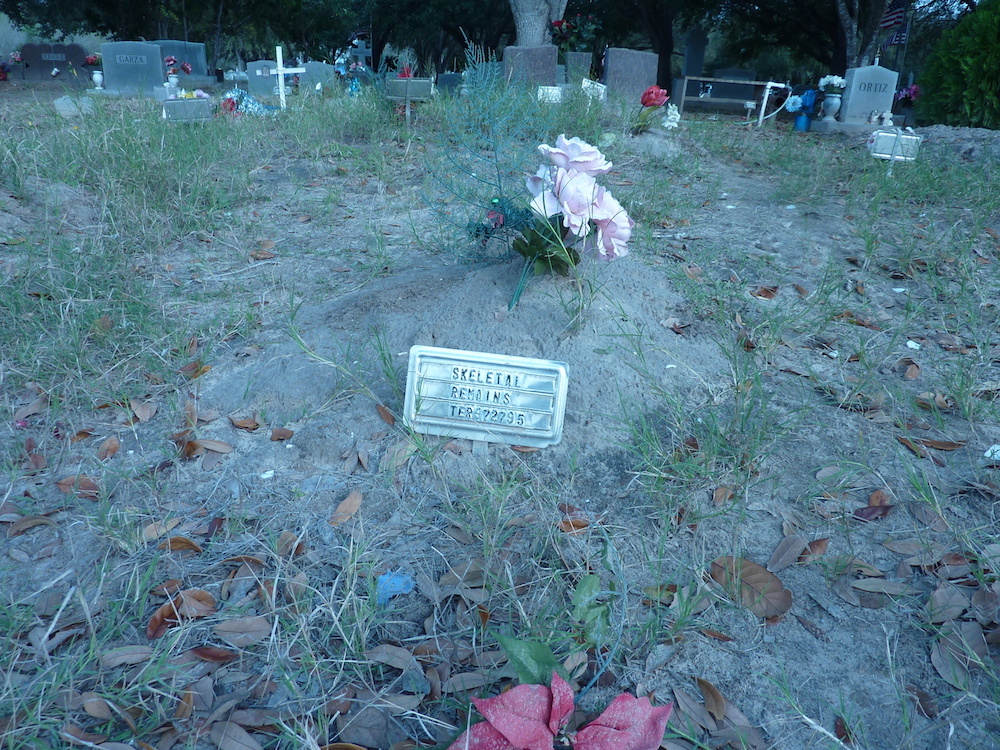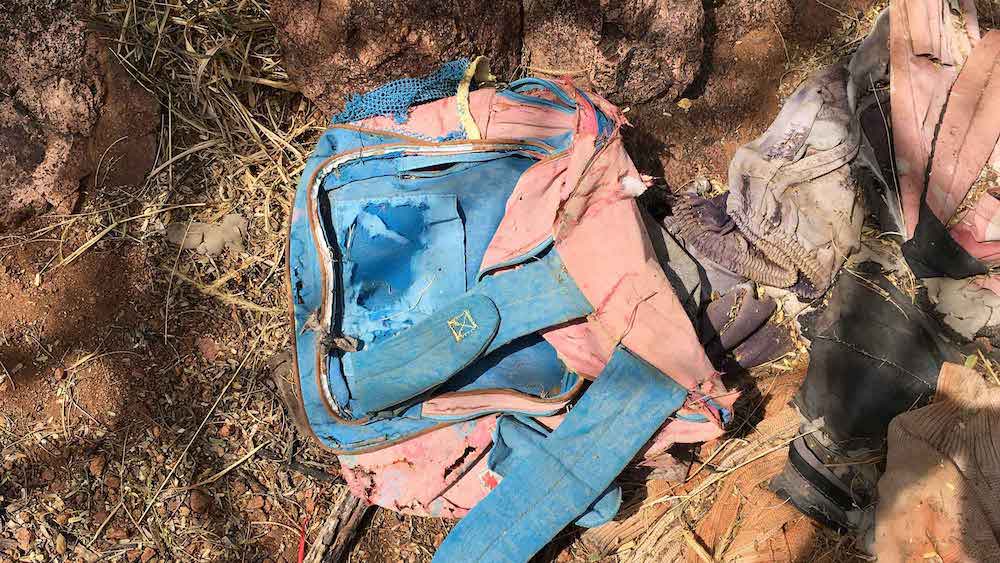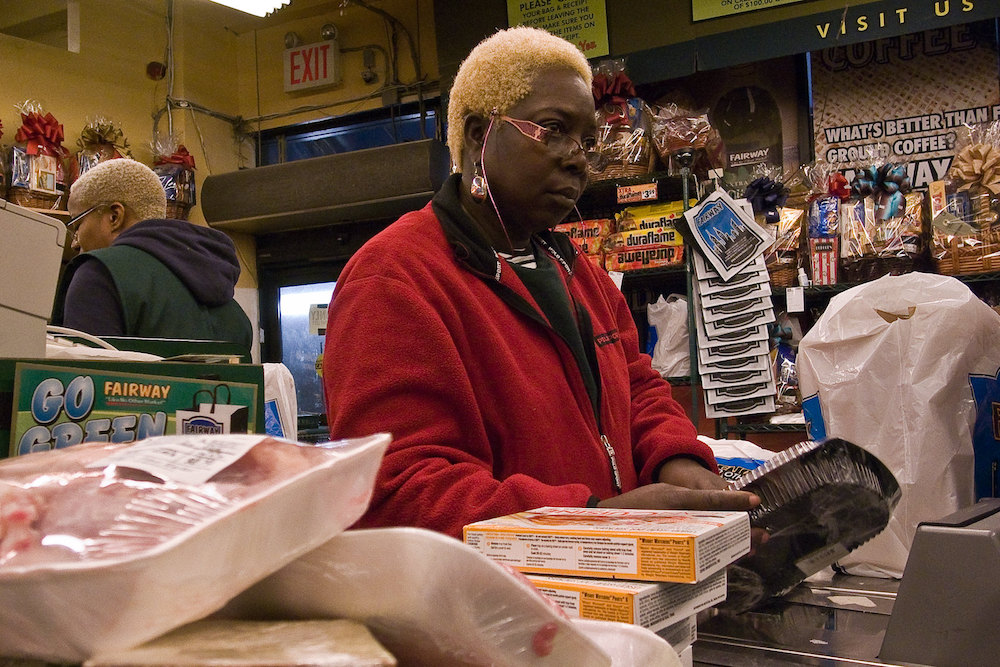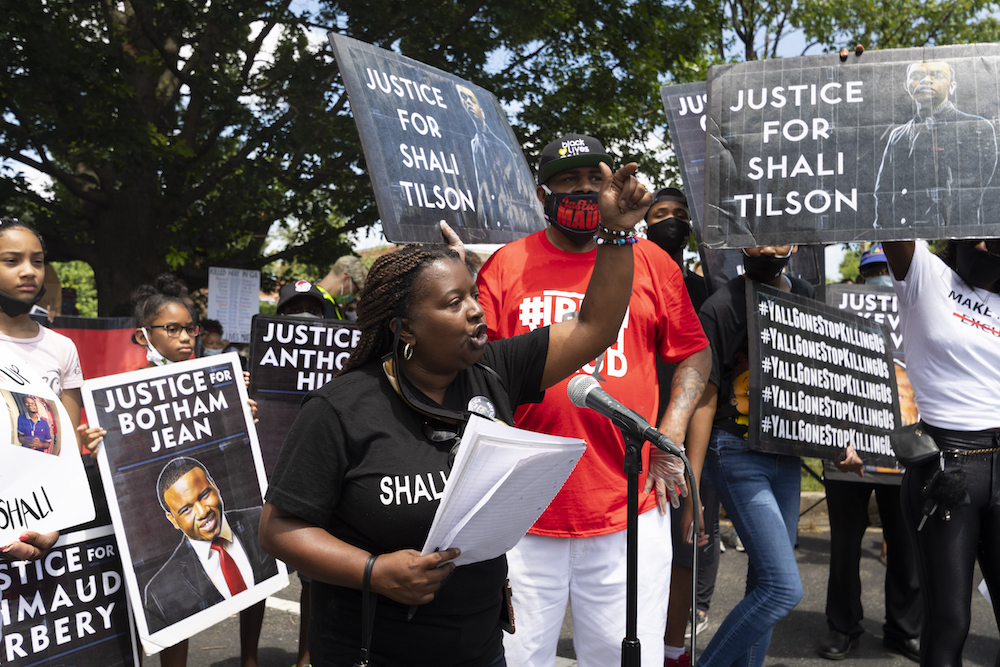The Dead Must Be Counted
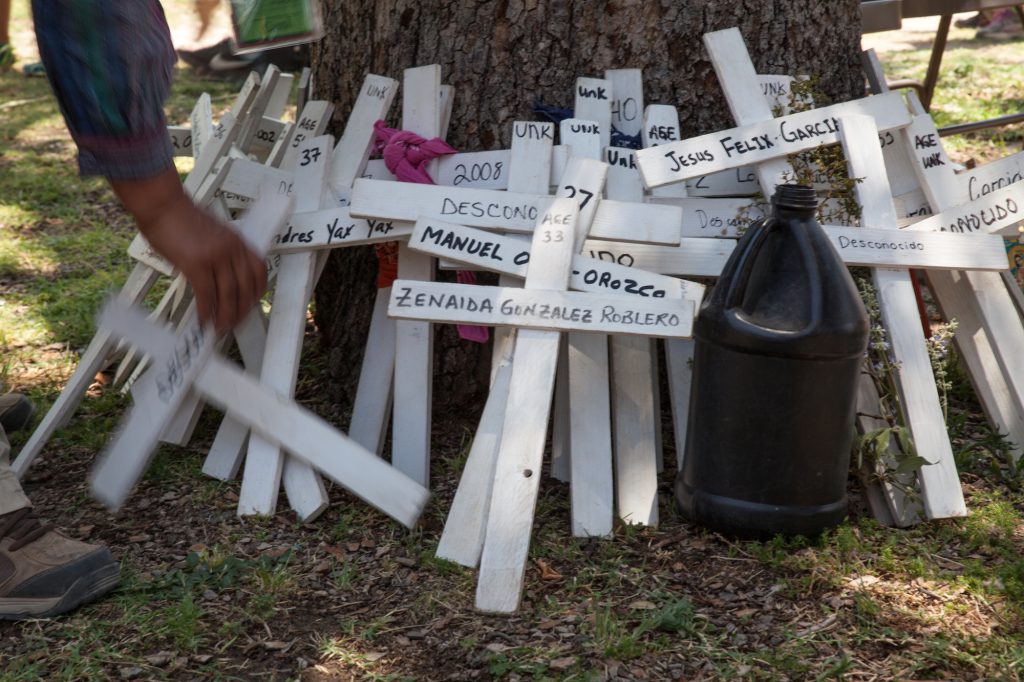
In the midst of the COVID-19 pandemic, disputes over accurate death counts have made international headlines. These debates throw a spotlight on what death counts really count: what and who they make visible and invisible.
As an anthropologist, I have spent most of a decade trying to determine how many undocumented migrants die attempting to cross into the United States from the south, and how and why that number is so difficult to track.
The official migrant death count tallied by the U.S. Border Patrol counts only the deaths that occur under their agents’ purview, and not, for example, bodies recovered by local law enforcement. These records consistently underrepresent the lethality of border crossing and of border enforcement policy itself.
By design, official death certificates are intended to count medical pathologies in a narrow way—to the exclusion of social factors or nuance. People may be listed as dying from hyperthermia (excessive heat) near the U.S.-Mexico border or from drowning in the Mediterranean Sea, rather than as victims of migration policies. Statistics may include people who die from pneumonia and miss them as victims of COVID-19, or count them as victims of the pandemic but miss that the root problem was a systemic lack of access to medical care. A death counted as being from a heart attack may miss being seen as a death from poor diet or lack of exercise. This narrowness allows social violence to go unseen, even when it kills.
These failures may be a product of individual malice, a nefarious policy of obfuscation, or, as is primarily the case in counting migrant deaths, inertia against changing standard practices. None of these are innocuous. To demand a proper count of deaths is to demand that social experience be included in the evaluation of how someone died. It requires a radical change in how society counts the dead.
Tracking disease outbreaks was one of the reasons why societies began counting deaths at all. Famously, Doctor John Snow’s 1854 maps of cholera deaths in London allowed him to trace the source of the outbreak to a contaminated water pump. His accounting created a strong narrative that provided a clear pathway to mitigating a public health issue. This historical example spotlights the power of effective counting.
Diligent effort is needed, especially now, to count deaths more clearly and comprehensively so that the real impact of everything from today’s pandemic to migration policies can be seen.
Statistics serve to make visible the events and systems that require intervention and societal change. Not counting keeps these invisible, below the radar of concern and action.
In 2012, I visited Terrace Park Cemetery, in Imperial County, California, as a part of a team from the Binational Migration Institute (BMI)—a research institute housed at the University of Arizona dedicated to the study of migration at the U.S.-Mexico border. We were investigating local practices of postmortem care for the discovered remains of undocumented migrant border crossers in the U.S. Southwest, and we understood that many were interred at Terrace Park.
During our visit, we had a chance to interview the cemetery director. To our surprise, he explained to us that there were “no foreign-born individuals” interred in the grounds, including in the dirt lot allocated for paupers’ graves.
This was a startling declaration. The cemetery had been a particular focus of activism and memorialization by migrant advocacy groups. As a Los Angeles Times article put it (after our trip), “In an unmarked dirt lot at the end of Terrace Park Cemetery in Holtville lie the remains of hundreds of unidentified migrants.”
How could we make sense of this contradictory information about Terrace Park? Over the course of BMI’s project, our team came to the troubling realization that although what the director told us was untrue, he was not lying. Bureaucratically speaking, it is true that no migrants are buried in Terrace Park Cemetery—but only because, we realized, the migrants who are buried there were never officially counted as migrants. A system for identifying and counting them had simply not been established.
Moreover, when our BMI team spoke to the county’s officer in charge of the final disposition of remains, we found that, as a cost-saving measure, the bodies of migrants recovered in Imperial County since 2009 are, in fact, no longer buried at all—instead, the county cremates all unidentified bodies after a year’s time and scatters their ashes at sea.
As a result, families and those who sympathize with these individuals have no burial site to visit for memorialization and activism. Now if migrants die in Imperial County they are effectively disappeared—not just from the records that do not account for their migrant statuses but also corporally, with the elimination of the primary forensic evidence of what occurred.
The toll of migrant deaths is driven by a border enforcement policy that utilizes geography as a boundary: Historic and relatively safe urban crossing zones were effectively blockaded starting in El Paso in 1993. This change funneled migrant traffic over time to more remote and increasingly rugged and dangerous landscapes. The Border Patrol’s own 1994 strategic planning document notes that “illegal traffic will be … forced over more hostile terrain”—a euphemism for leveraging mortal peril as a deterrent for unauthorized border crossings.
The cold logic of this border enforcement strategy is reinforced by a lack of accounting for its casualties.
Of the more than 40 county jurisdictions along the U.S.-Mexico border, only one—Pima County in Arizona—specifically distinguishes migrant deaths from others. This was a self-imposed initiative, started when the county began to see an exponential increase in the number of bodies that were likely of migrants. In the 1990s, perhaps 12 deaths per year were informally attributed as border crosser fatalities—which many then saw as intolerable suffering. In the early 2000s, that went up to 100 or more. In 2001, 14 individuals from the same group were found deceased in a remote region. The event shocked Pima County residents and was eventually immortalized in the creative nonfiction book The Devil’s Highway.
Backed by the numbers, advocates say: “These deaths are unnecessary and preventable. Do something about it.”
In the years that followed, the Pima County Office of the Medical Examiner (PCOME) opened its records to the public and allowed a research team from BMI to come up with a standardized criteria to derive a migrant-specific body count. BMI’s findings were published as a report in 2006. Their criteria includes aspects such as whether a body was recovered in a known migration corridor, whether the person’s belongings match the things typically carried by migrants, and whether those supplies came from Mexico, among other qualifying characteristics. Following the BMI team’s recommendations, the migrant status of decedents is now listed on a supplemental form filed alongside death certificates.
Why does the PCOME staff commit to this additional effort? Gregory Hess, PCOME’s current chief medical examiner, summarized the rationale when talking to reporters for a recent article. “A hallmark of civilized society,” he said, is to keep track of deaths “with the intent to decrease those deaths or take policy measures to help whatever the issue is.”
The records of thousands of deaths in southern Arizona since 1990 revealed that death counts ballooned starting in 2000, a fact that revealed precisely how border enforcement works: Thousands die from complications related to dehydration and heat stroke when they travel through “more hostile terrain.” The count developed in Pima County also facilitates further community action and protest, as it visibly quantifies the deadly result of federal border security policies.
Pima County’s efforts have accounted for an average of 167 undocumented border-crossing deaths annually between 2001 and 2018. This is likely still an enormous underestimate because it doesn’t include those whose bodies might never be recovered in the vast terrain of the southwest borderlands; there is no systematic effort to search for all who die there.
A journalistic investigation showed that from 2012 to 2016, while the official Border Patrol count for migrant deaths across Arizona was 636, their own count was 795. In some regions, the Border Patrol’s figures were shown to undercount deaths by as much as 300 percent. In many places, no local records are available or sufficient to approximate migrant deaths.
Understanding the lack of accounting for the accurate scope of migrant death in official statistics is useful for thinking through other areas where official death tolls and the experience of death run painfully out of sync.
Human mortality is defined by a complex confluence of social and physical factors, ranging from smoking habits to the quality of the air we breathe to poverty and systemic racism. Many of these factors are sometimes ignored or even actively denied as contributing problems.
In a breakthrough paper published in 1993 in the Journal of the American Medical Association, epidemiologists William Foege and J. Michael McGinnis noted that many of the “Actual Causes of Death in the United States” (as their paper was straightforwardly titled)—from obesity to pollution to recreational drug habits—elude medical records.
In 1990, for example, the primary cause of death in the United States was officially listed as heart disease. But this ignores, the authors point out, the myriad risk factors for heart disease: tobacco use, cholesterol levels, hypertension, obesity, and decreased physical activity. About half of the deaths of U.S. residents, they reported, could be attributed to these types of factors. These continue to be the unseen killers.
What has been discovered within existing—albeit inadequate—accounting of COVID-19 deaths is that the virus has disproportionately impacted communities of color in the U.S. and U.K. While Black and Latinx populations are minorities of the U.S. population, they are overrepresented in COVID-19 death tolls by a factor of nearly two. The root causes are systemic racism and other types of injustices that have, over generations, left marginalized populations siloed without access to secure housing, nutrition, or adequate health care, among many other factors.
Efforts are underway to highlight unseen causes of death. A number of citizen-led efforts in the United States (as well as some international journalistic efforts) have recently emerged to count gun violence deaths and deaths at the hands of (or in the presence of) police—those not otherwise systematically or comprehensively recorded in any unified governmental sources.
The efforts to keep track of the root causes of death are intended to make them politically legible. These numbers expose causes for concern; those who collect them vie for political recognition of the things that kill us but shouldn’t. Backed by the numbers, they say: “These deaths are unnecessary and preventable. Do something about it.”
In some ways, the undercount of COVID-19 cases is more actively due to political intervention than what is happening on the southern border, where some number of migrant deaths are uncounted due to political inertia. The U.S. president has been outspoken in resisting a wider availability of COVID-19 tests because more tests mean more confirmed positive cases that must be counted. In a recent campaign event, he described telling public health officials to “slow the testing down, please!”
In other countries, such as Brazil and Nicaragua, officials have more blatantly denied the scale of COVID-19 deaths. Nicaraguan officials are doing “express burials” in the middle of the night for individuals who they claim died of respiratory problems and not the novel coronavirus. Express burials shield their dubious claims about the nature of the mysterious deaths from oversight. In June, Brazil stopped releasing the country’s COVID-19 death tolls to the public at all.
Over time, the extent to which COVID-19 deaths have not been fully counted has become clear: because sick people have not had consistent access to testing, because there is unequal access to medical care and many deaths at home, and because of an evolving understanding of what a COVID-19 death entails. Right-wing commentators and politicians have protested counting COVID-positive deaths of individuals with comorbidities—or more than one chronic condition, including COVID-19—as COVID-19 deaths, even if the novel coronavirus accelerated the chain of events leading to death.
The head of the U.S. Centers for Disease Control and Prevention (CDC)—the clearinghouse for vital records collections—has said the COVID-19 official death toll is “almost certainly” an undercount, while Trump continues to suggest the number is inflated. Beginning July 15, the Trump administration ordered hospitals across the United States to start sending all COVID-19 data to the Department of Health and Human Services, bypassing the CDC altogether. This creates concern about further political manipulation of accurate information, including death tolls.
At the same time, the lethality of COVID-19 has been used by the U.S. government to justify emergency security measures, including “expedited removals” to deport undocumented individuals without judicial review. During the first two months of this policy—April and May—an estimated 35,000 individuals were subject to this form of removal.
The U.S. government has also adopted a blanket policy to accept no asylum applications at ports of entry as of June and has nearly ceased asylum hearings for those already detained. Many individuals waiting to make asylum claims at U.S. ports of entry have been forced to remain in Mexico, with most of them in informal camps where hygienic conditions are untenable and ideal for the spread of the novel coronavirus. If these individuals die in Mexico, their deaths will not be included in the United States’ pandemic death tolls.
Tallying the numbers of the dead is important. But so too is documenting the context behind those numbers. Many nongovernmental organizations compiling death tolls as a matter of activism also work to transcend the impersonal nature of statistics. They collect information about the individuals, which allows them to be personally mourned in ways that statistics alone can’t facilitate. For example, A People’s Archive of Police Violence in Cleveland does not just tally events but “collects, preserves, and shares the stories, memories, and accounts of police violence as experienced or observed by Cleveland citizens.”
In a similar way, efforts have emerged to consider the individuals who have died of COVID-19 and not just the statistics, often emphasizing the preventable chain of events that led to their deaths. The New York Times, NPR, and other media organizations have created websites to host these stories. Others in the United States have started counting COVID-19 deaths of health care workers, as this information is not officially tallied.
A movement to build physical, community-based memorials for those who died from the novel coronavirus is now spreading across the United States. Arizona resident Kristin Danielle Urquiza created an altar in front of the Arizona State Capitol building in honor of her father, Mark Anthony Urquiza, who died of complications related to COVID-19 on June 30. The effort was both a memorial and an attempt to draw attention to the “carelessness of the politicians” and “lack of leadership,” his obituary reads, which are allowing the virus to spread. The Twitter hashtag #HonestObit has gained popularity for obituaries that hold government officials responsible for unnecessary COVID-19 deaths.
Many local organizations in the U.S. Southwest strive to memorialize migrant deaths in a similar manner: the Migrant Quilt Project, for example, memorializes those whose bodies have been recovered. Biannually on the Mexican Día de Los Muertos (Day of the Dead) and in early summer, Tucson-based organizations assemble pilgrimages with people carrying crosses bearing the names of those identified or else the word desconocido (“unknown”). The Colibrí Center for Human Rights hosts a Devuélvanlos (“Bring them Back”) campaign that shares the stories of migrants who went missing and died on the border, and the stories of their families who search for their missing loved ones. (Many of these efforts have been temporarily put on hold due to the pandemic.)
Among the many social fault lines that the COVID-19 pandemic brings into focus are the social side of body counts and what it means to be uncounted. Through the pandemic, a national—and international—conversation has emerged about the distinction between official death tolls assembled by governmental organizations and facts on the ground.
To count faithfully can help us give social meaning to a person’s death, to say: “We see you. We acknowledge that your life had value.” Making preventable deaths visible through accurate counts is a step toward mitigating such fatalities in the future.
In the middle of a pandemic, capturing statistics about the spread of disease and vulnerable populations can facilitate future policy actions to prevent repeating history. We choose not to do so at our own peril.


































